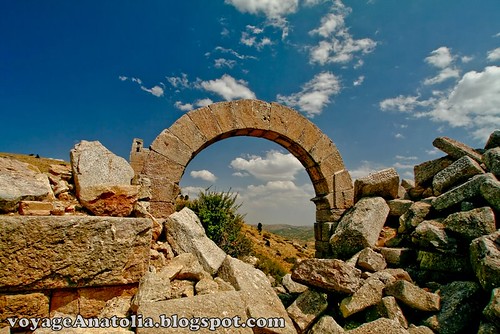
Isauria, in ancient geography, is a rugged isolated district in the interior of South Asia Minor, of very different extent at different periods, but generally covering much of what is now Konya/Bozkir province of Turkey, or the core of the Taurus Mountains. It derives its name from the contentious Isaurian tribe and twin settlements Isaura Palaea (Old Isaura) and Isaura Nea (New Isaura). Isaurian marauders were fiercely independent mountain people who created havoc in neighboring districts under Macedonian and Roman occupations.
The permanent nucleus of Isauria was north of the Taurus range which lies directly to south of Iconium and Lystra. Lycaonia had all the Iconian plain; but Isauria began as soon as the foothills were reached. Its two original towns, Isaura Nea and Isaura Palaea, lay, one among these foothills (Doria) and the other on the watershed (Zengibar Kalesi).
In the 4th century BC, Isauria began as it would end, and became the wild district about Isaura Palaea and the heads of the Calycadnus. When the capital, Isaura (also known as Isaura Vetus or Isaura Palaea), a strongly fortified city at the foot of Mt. Taurus, was besieged by Perdiccas, the Macedonian regent after Alexander the Great's death, the Isaurians set the place alight and let it perish in flames rather than submit to capture.
More: Exploring mysterious cities of ancient Anatolia, Kanytelleis of Olba.